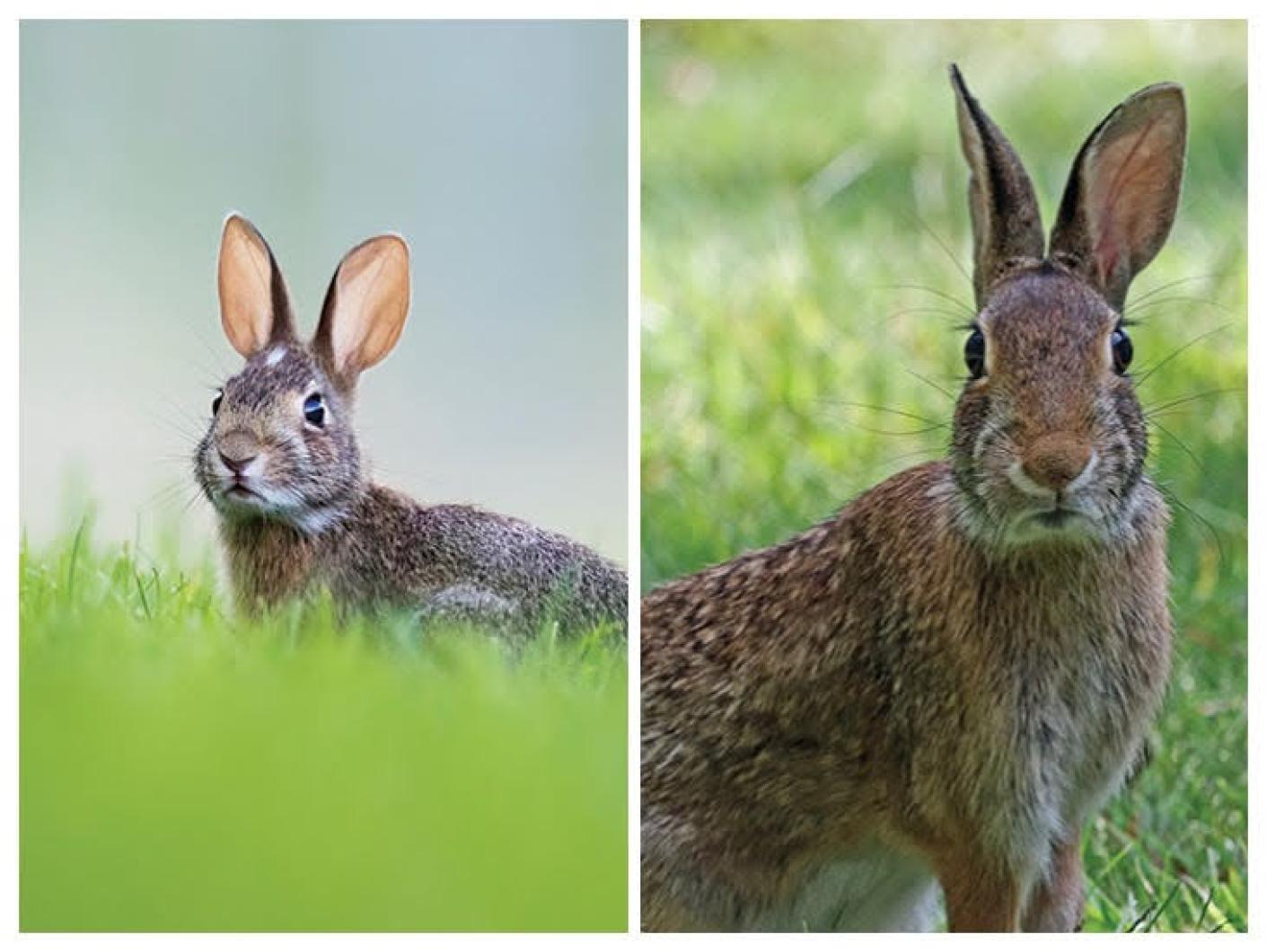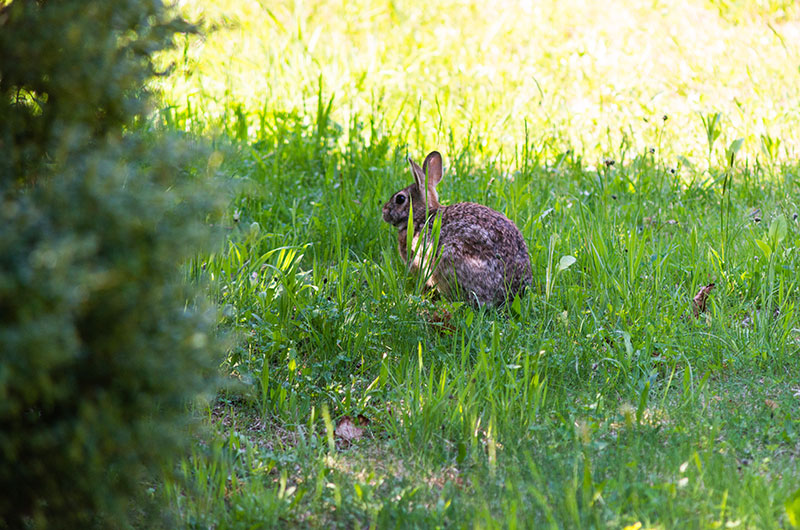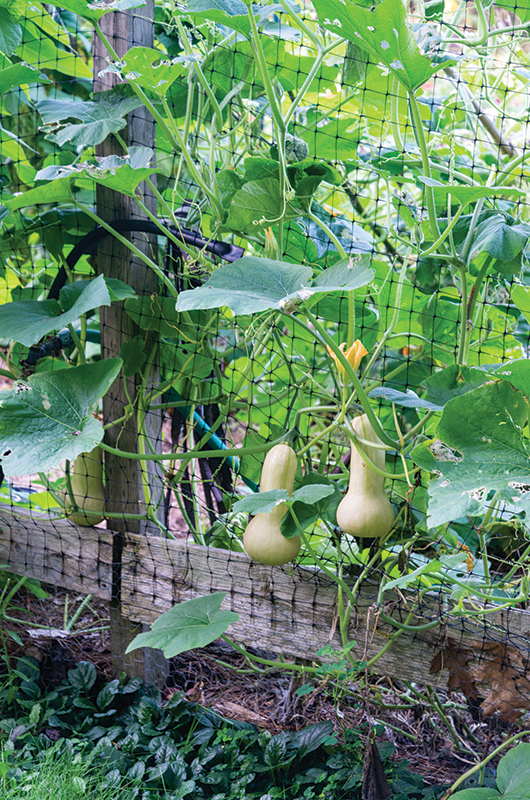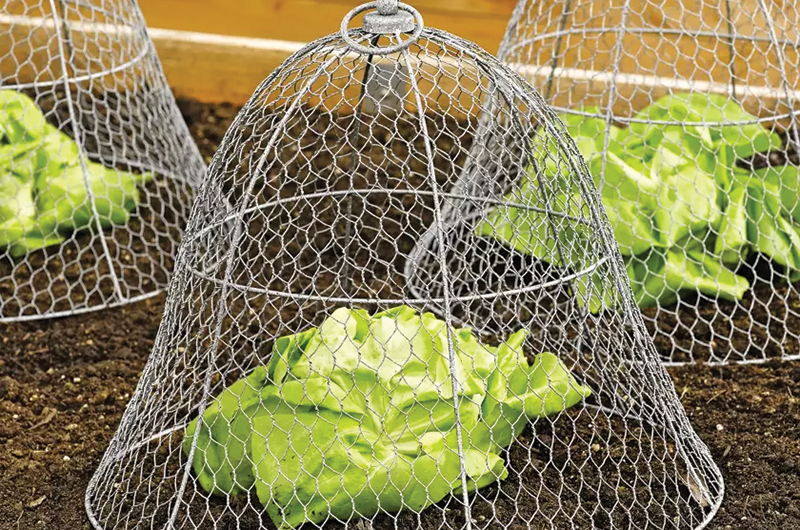When it comes to garden pests, the cottontail rabbit is hard to hate. With its innocent glassy eyes, bushy tail and energetic personality, the cuteness factor can sometimes overwhelm an otherwise guarded gardener.
But once your lettuce crop or zinnia patch is devoured by one (or more) of these fluffy creatures, that goodwill is quick to fade. While perhaps not the most pernicious of the Vineyard’s pests, Island rabbits are decidedly persistent, with the ability to challenge even the most experienced local gardener.
“I call them the monster rabbits,” said Roxanne Kapitan, garden manager for Oakleaf Landscape, who has spent decades gardening on the Island. Her home garden in Oak Bluffs, Roxanne said, is “filled with rabbits.”
It’s no surprise that rabbits are so prevalent on-Island, just as they are abundantly present in many suburban environments in the U.S. As Luanne Johnson, Island naturalist and executive director of BiodiversityWorks, explained, cottontails are a “human commensal” species whose adaptations allow them to thrive in human yards and gardens.
“They get subsidized by what we provide,” she said. “If you build it, they will come.”
But it hasn’t always been this way, Luanne explained. The kind of rabbit that enjoys our human environment, the eastern cottontail (sylvilagus floridanus), is not a native species on-Island. The eastern cottontail, she said, displaced the native New England cottontail (sylvilagus transitionalis), beginning in the 1920s.
“In the early part of the 1900s, it was the practice of fish and game departments in many states to promote hunting and release hunting species,” she said. The eastern cottontail, native to the Midwest, was one of the species departments favored, and the Massachusetts Division of Fisheries and Wildlife released them in the thousands on-Island.
While it’s difficult to tell the two species apart with a passing glance, you are most likely seeing the eastern cottontail near your garden. Luanne explained that the two species differ greatly in their dietary habits: while the New England cottontail thrives in dense forest thickets, the eastern cottontail prefers open grassland environments.
That ecological difference was, in fact, one of the reasons that the eastern cottontail was chosen to be released on-Island. “They wanted an open country game animal,” Luanne said, and with the eastern cottontail they got one.
The unfortunate side effect of that selection, though, was that the vegetable and flower gardens that abound on Martha’s Vineyard are the perfect habitat for the invasive mammal, and eastern cottontail have since proliferated.
Seldom have the New England cottontail been sighted on-Island since the 1920s, ever since a rabbit disease introduced by the eastern cottontail interloper decimated the native species. In his 1969 book The Mammals of Martha’s Vineyard, naturalist Allen R. Keith lamented the loss.
“This is an almost classic example of the folly of most introductions,” he wrote. “It not only caused the extermination of one species on the Island but also destroyed one of the truly unique characteristics of the Vineyard’s mammal fauna.”
It is a folly whose ramifications all Island gardeners must contend with.
“There is a reason that ‘breeding like rabbits,’ is a colloquial term,” Luanne said.
On the Ground
Longtime Island gardener Tom Hodgson is no stranger to this fight.
At 75, Tom is a seasoned veteran of the war between gardeners and rabbits, having spent the last six decades developing a playbook to protect his garden from their insatiable appetites. The strategy he has settled on is to physically fortify his garden from pests.
“Chicken wire is the first line of defense against rabbits,” he said on a recent tour of his West Tisbury garden. Around the perimeter of his primary vegetable-growing area, Tom has deer fencing stretching toward the sky. The rabbit-halting defenses, however, are closer to the ground.
Towards the bottom of the fence, the deer fencing material is stapled onto long wooden boards that run from one fence post to the next. Those boards run about 18 inches above the ground and the gap below them is securely covered with chicken wire, which is also buried several inches down into the dirt. (Rabbits can chew through deer fencing.)
The chicken wire creates a mostly impenetrable barrier for rabbits, Tom said, though human fallibility means that a few rabbits can sometimes slip into the garden.
“They occasionally bust their way in if I leave the door open,” he said.
If rabbits do get into the garden, Tom has a redundant security measure: his Australian shepherd, Coquina. “She is an expert rabbit chaser,” he said. Though Coquina usually isn’t fast enough to catch the rabbits, chasing them is typically enough to get them out of the garden.
Roxanne Kapitan employs a slightly more varied approach to combat the rabbit problem, which extends throughout her yard. “There are two basic ways to stop rabbits — the physical and the chemical,” she said.
In terms of a chemical approach, Roxanne said she prefers her own homemade rabbit deterrent spray made from cloves, garlic and hot peppers. Not only does it smell better than the store-bought stuff, but it’s way cheaper, too. Rabbits don’t like vinegar, either.
For physical deterrents, Roxanne uses a range of materials and objects, from hardware cloth fencing to garden pots. “They are not aggressive, the bunnies, so that’s the thing to remember,” she said. Even cursory obstacles, like a pile of seaweed or a ring of plastic pots around the more appetizing plants can deter them.
“They might find these upside-down pots in their way and say ‘eh, it’s too complicated,’” she said. With rabbit food so plentiful on Island, they often simply go for what’s easiest.
But despite their easy going attitude and penchant for laziness, rabbits are vigilant, always ready to take advantage of any hole in the defenses.
Just days after a rabbit-free tour of Tom Hodgson’s garden, the Vine received a follow-up email from Tom: “Guess who/what popped out of the kales this morning and went tearing around the garden?” he wrote. “A baby bunny … looks like I can’t put off rebuilding the fence any longer.”
Thomas Humphrey is a reporter at the Vineyard Gazette.
Bunny Battle Cheat Sheet
Tips for discouraging rascally rabbits in your garden.
1. Plan ahead. Accept that the rabbits are there and will do their best to eat your young plants, so be prepared.
2. Build physical barriers. A vegetable and cutting flower garden should have chicken wire 12 to 18 inches tall all the way around the base of your fencing, preferably with some buried in the soil below the fenceline. Young perennials like coneflowers and black-eyed Susans that aren’t in a fenced-in garden can be protected with makeshift chicken wire cages or a ring of pots until the plants get more than a foot tall.
3. Use a natural repellant. During the season, apply a homemade spray like Roxanne Kapitan makes (p. tk) or an organic store-bought rabbit repellant. Remember to reapply after rainfall.
4. Pick plants carefully. When planting a perennial garden on the Vineyard, keep in mind that many drought- and deer-resistant plants are also unpleasant to rabbits. Lamb’s ears, lavender, catmint, sedum, iris, daffodil, alliums, and peonies are just a few good choices.
5. Be aware of nests. Rabbits are always looking for areas to nest. Hay or straw mulch in the vegetable garden is a favorite – another reason to keep the mommies out in the first place. They’ll also look for overgrown grassy areas or protected areas between shrubs to have their litters, which can have as many as 10 kits.















Comments